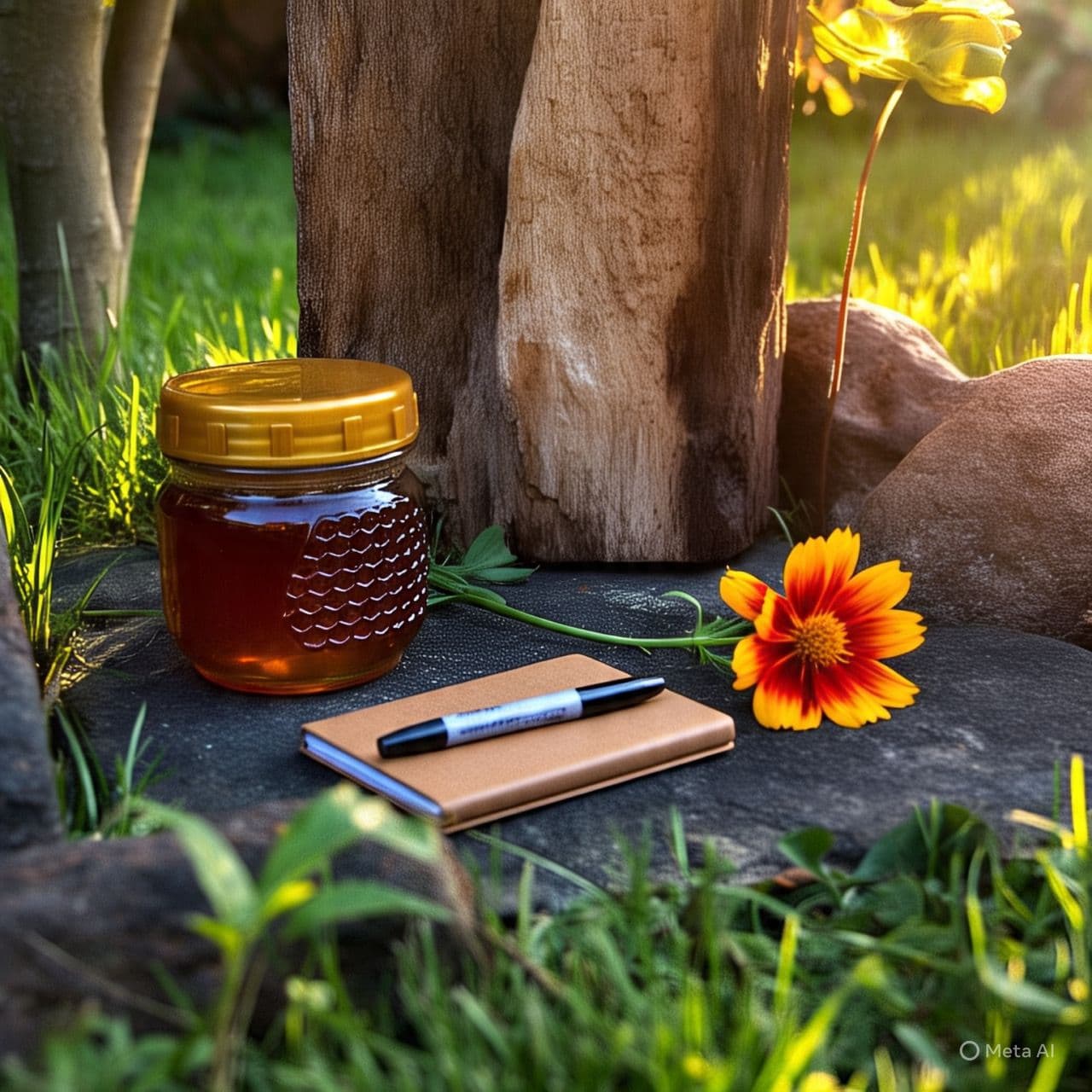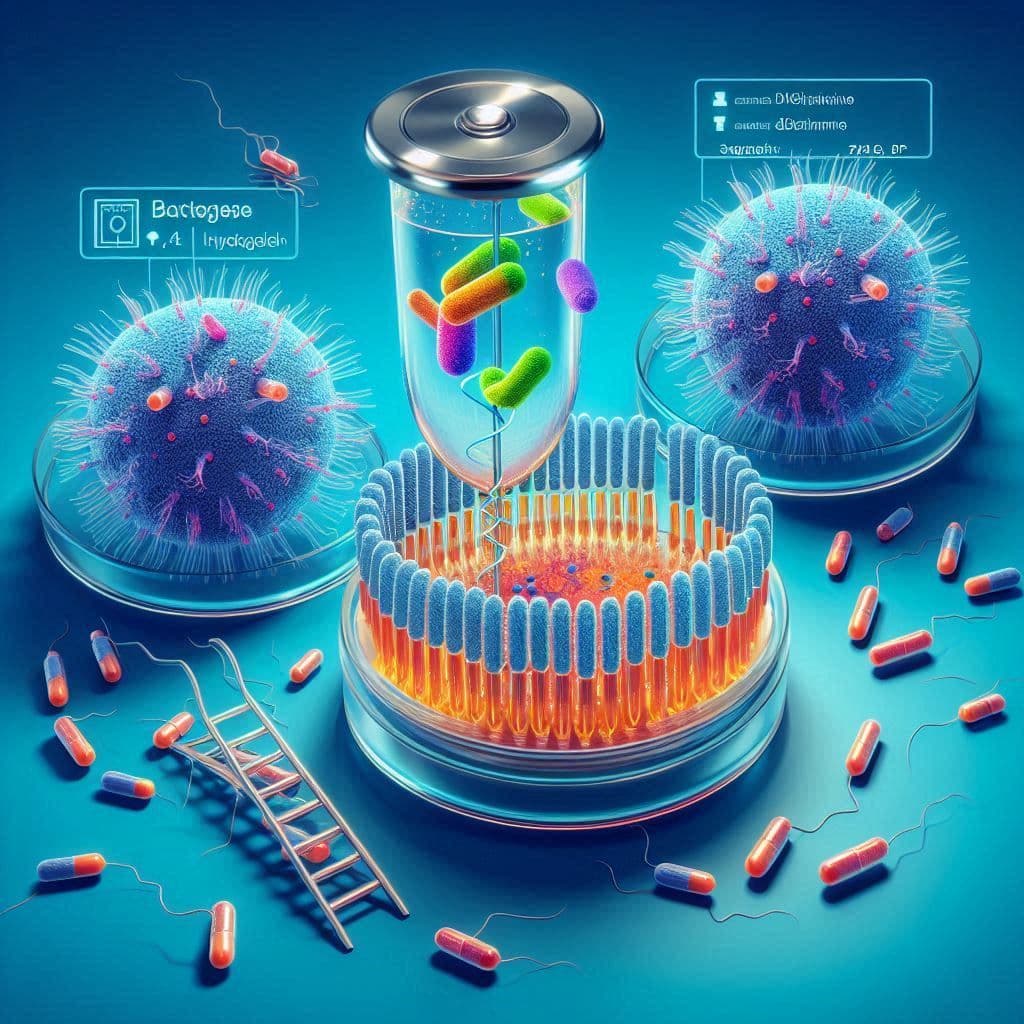How Honey's Secret Compound Could Protect Men From Pesticide Damage
Masterchinedum
Owner

Table of Contents
What if I told you that something as simple as honey could shield your body from one of agriculture's most dangerous chemicals? Recent research has uncovered something remarkable about a compound hiding in plain sight.
TL;DR: Recent research shows that chrysin—a natural compound found in honey, propolis, and bee pollen—can significantly protect male reproductive health from damage caused by the widely-used pesticide Paraquat. The results are pretty remarkable.
The Hidden Threat in Our Food System
Let's start with the villain of our story: Paraquat. You might not know its name, but this herbicide is sprayed on crops worldwide. While it keeps weeds at bay, it's also linked to some serious health problems—lung damage, neurological issues similar to Parkinson's disease, and concerning effects on male fertility.
Here's the scary part: Paraquat works by creating what scientists call "oxidative stress"—essentially, it floods your cells with harmful molecules called free radicals. Think of it like rust forming on metal, but happening inside your body's tissues.
The male reproductive system is particularly vulnerable because it's metabolically active and rich in fats that these free radicals love to attack. The result? Damaged sperm production, reduced fertility, and long-term reproductive health issues.
Enter Chrysin: Nature's Bodyguard
This is where our hero enters the story. Chrysin is a natural flavonoid—one of those beneficial plant compounds you hear about in health articles. You can find it in:
- 🍯 Honey
- 🐝 Bee propolis and pollen
- 🌿 Various plants like passionflower
- 🌱 Some mushrooms
Scientists have known for a while that chrysin has some impressive properties: it's an antioxidant, helps regulate hormones, and has anti-inflammatory effects. But until recently, no one had tested whether it could specifically protect against pesticide damage to male reproductive health.
That's where this groundbreaking research comes in.
The Experiment: Testing Nature vs. Chemicals
Researchers designed a study using laboratory rats to test chrysin's protective effects. Here's how it worked:
The Setup:
- 28 rats divided into 4 groups
- Some got chrysin pretreatment (like taking a natural supplement)
- Others were exposed to Paraquat
- One group got both chrysin protection AND pesticide exposure
- Control group got neither
The Protocol:
- Chrysin group: 7 days of natural compound treatment
- Then a single dose of Paraquat (equivalent to acute exposure)
- 24 hours later: detailed analysis of testicular tissue
The Results Will Surprise You
What Paraquat Did (The Bad News)
The pesticide was brutal to the reproductive system:
- Crashed the body's natural defenses: Key antioxidant enzymes (think of them as your cellular cleanup crew) dropped significantly
- Increased cellular damage: Markers of tissue destruction shot up
- Depleted protective molecules: The body's natural antioxidant reserves were wiped out
- Created toxic conditions: Harmful compounds accumulated in reproductive tissues
In simple terms, Paraquat turned the reproductive system into a cellular war zone.
What Chrysin Did (The Amazing News)
Here's where it gets exciting. Chrysin pretreatment didn't just help—it was like having a superhero swoop in:
✅ Restored the cleanup crew: All those crashed antioxidant enzymes? Chrysin brought most of them back to normal levels
✅ Reduced cellular damage: Markers of tissue destruction dropped significantly
✅ Replenished defenses: Natural antioxidant levels were restored
✅ Neutralized toxins: Harmful compounds were cleared from the system
The protection was so comprehensive that in many cases, you couldn't tell the difference between chrysin-protected tissues and completely healthy control tissues.
Why This Matters for Real Life
The Science Behind the Protection
Chrysin works like a multi-layered defense system:
- Free Radical Scavenger: Directly neutralizes harmful molecules
- Enzyme Protector: Keeps your natural antioxidant systems running
- Cellular Repair: Helps restore damaged tissues
- Detox Booster: Enhances your body's ability to clear toxins
What This Could Mean for You
While this study was done in rats, the implications are significant:
- Agricultural workers exposed to pesticides might benefit from chrysin supplementation
- General population facing environmental toxin exposure could gain protection
- Men concerned about fertility might find natural support options
- Future medicine could incorporate chrysin-based protective therapies
The Bigger Picture: Where Science Meets Nature
This research is fascinating because it represents something important: using rigorous science to validate what nature has been providing all along.
We're not talking about replacing modern medicine or safety protocols—proper protective equipment and reduced pesticide exposure remain crucial. But this research opens doors to complementary natural protection strategies.
What's Next?
This study is just the beginning. Future research needs to explore:
- Human studies: Do these effects translate to people?
- Optimal dosing: What's the right amount for protection?
- Other toxins: Could chrysin protect against other environmental threats?
- Delivery methods: How can we best harness chrysin's benefits?
My Take: The Future of Protective Medicine
This research represents the kind of data-driven natural health solutions that could shape the future. We're moving beyond "it's natural so it must be good" toward "here's exactly how and why this natural compound works."
The intersection of environmental health, natural compounds, and rigorous science is where some of the most exciting discoveries are happening. Chrysin's protective effects against pesticide damage might just be the tip of the iceberg.
What do you think about natural compounds like chrysin as protective strategies? Have you considered how environmental toxins might be affecting your health?
Sources: This post is based on peer-reviewed research on chrysin's protective effects against paraquat-induced testicular oxidative stress. All findings mentioned are from controlled laboratory studies.
Like this deep dive into cutting-edge health research? Subscribe to my newsletter for more posts exploring the fascinating intersection of science and nature.
